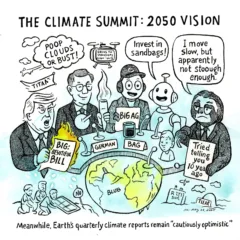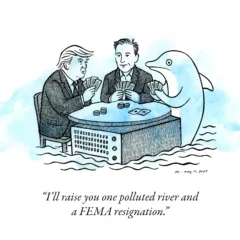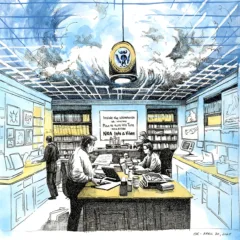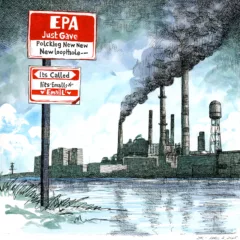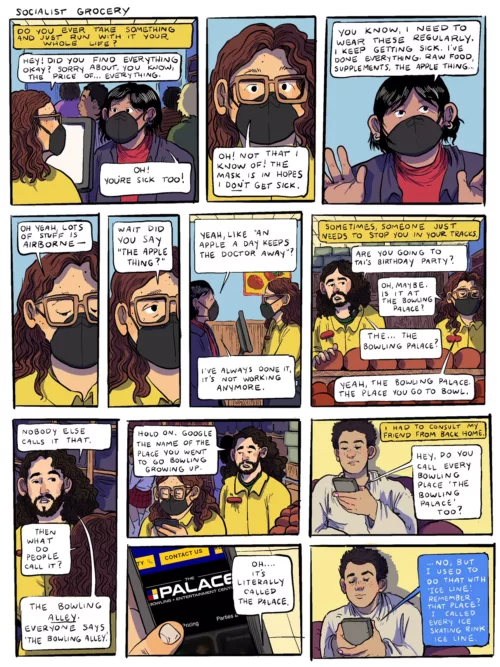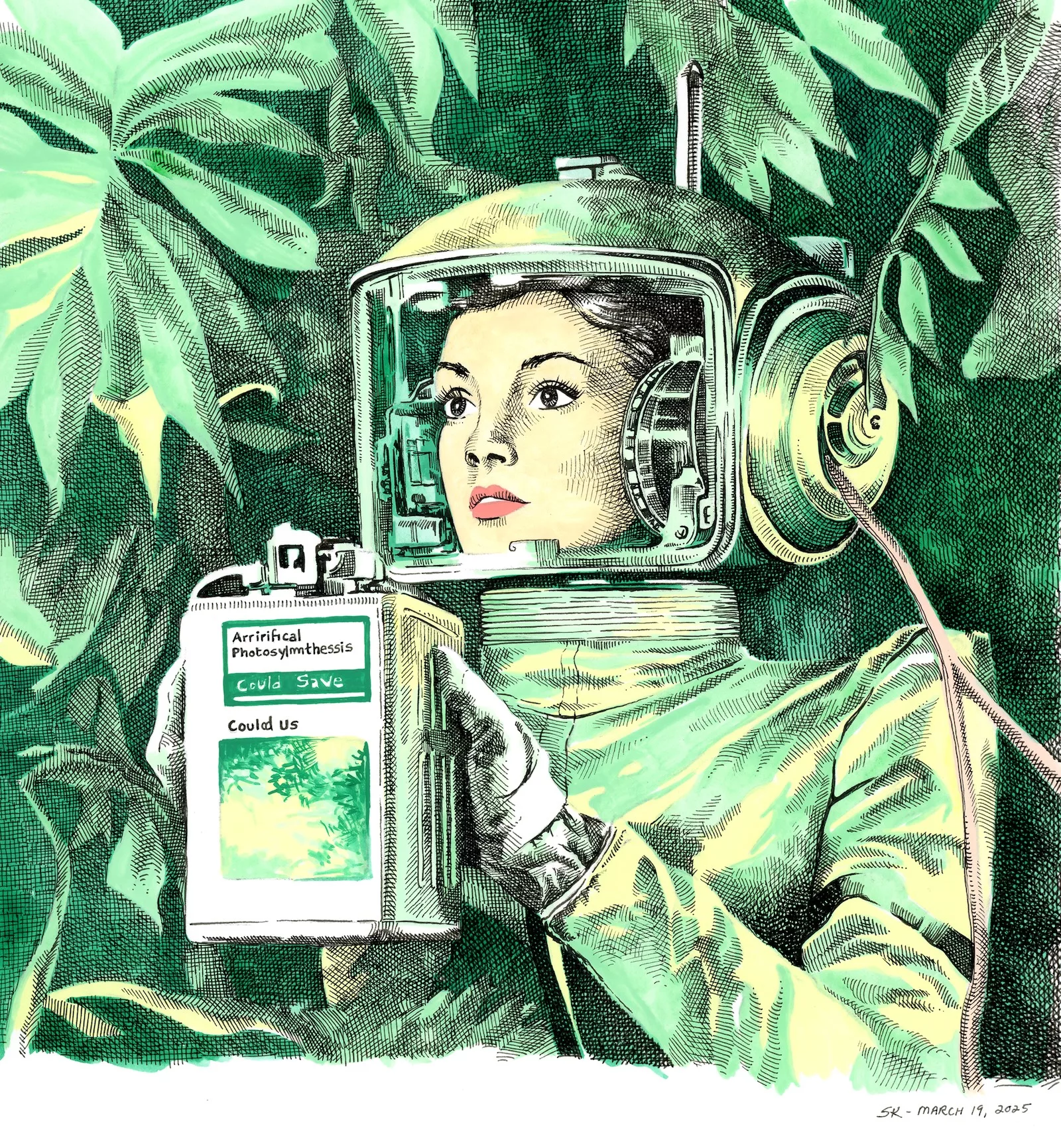
Artificial Photosynthesis Could Save Us – If We Last That Long
In a week where the human race has simultaneously cracked the secret to fusion energy and watched a private lunar lander limp onto the Moon’s surface, it’s clear that humanity is riding high on its own cleverness — even as the planet beneath our feet slides toward chaos.
Let’s start in the heavens, because that’s where the billionaires want us to look. A SpaceX capsule docked with the International Space Station this week, as astronauts prepared to return after nine months in orbit. A NASA astronaut played a prank on the SpaceX team during the rendezvous, pretending to have made “first contact” with aliens — a joke that might hit a little too close to home for anyone watching the news lately. Meanwhile, Mars’ rusty hue may be linked to a habitable past, prompting the inevitable question: Will we ruin Mars, too, if we ever make it there?
But the real action isn’t in space — it’s here on Earth, where the Trump administration’s “deal of the century” with mining companies has triggered an environmental cascade. Trump’s EPA, now essentially a customer service desk for the oil and gas industry, has moved to roll back dozens of climate regulations. That includes loosening chemical safety rules and gutting the environmental review process for energy projects. Even California, Arizona, and Nevada — no strangers to political disagreements — have united in demanding that the administration fix a critical Colorado River dam before the water crisis spirals further.
And yet, America’s clean-energy industry is growing — despite the federal government’s best efforts to choke it. Florida has become a solar superpower, while Gaza’s recovery is pinned on solar power as well. African solar installations are set for a record year. Unfortunately, rooftop solar in Wyoming was a casualty of a failed political coalition — but lawmakers swear they’ll try again.
Back in the oil fields, Big Oil executives are feeling a little queasy. They backed Trump’s energy boom, but his erratic tariff policies have sent gold soaring above $3,000 and left oil investors jittery. Line 5, a Trump donor, is profiting off a controversial pipeline deal that threatens to pollute fragile ecosystems. And in Texas, oil executives gathered beneath a cloud of bravado and quiet panic.
Meanwhile, the environment fights back. Thousands of fish died in cyclone-hit northern rivers as blackwater choked out oxygen. Coral reefs are under assault from acidifying oceans — though a team of scientists armed with new buoys and an underwater “doorbell” are trying to track the coral-eating fish responsible for some of the damage. Scientists are also monitoring smoke from wildland-urban interface fires — which, it turns out, is even more toxic than smoke from remote wildfires.
Volcanoes are restless too. Scientists warn that a volcano near Alaska’s largest city could erupt soon. And while severe weather in Tornado Alley is expected to shift into new territories this year, coastal cities are grappling with rising seas and crumbling infrastructure. In Egypt’s historic Alexandria, ancient buildings are disintegrating under the pressure of encroaching tides. Pacific Island nations face mounting water insecurity, while scientists in Los Angeles have discovered that cooking emissions rival fossil fuels as a source of ozone pollution.
And then there’s the fusion breakthrough — unlocking the power of the stars. Scientists are thrilled. Politicians are confused. Oil companies are pretending it didn’t happen. But while fusion could provide unlimited clean energy in the future, right now America can’t even keep its environmental data safe. The Trump administration continues to purge climate records and research, leaving scientists scrambling to preserve what they can.
Even in chaos, some humanity remains. A Colombian conservationist continues his fight to protect pink river dolphins. Chicago is trying new approaches to manage toxic PFAS pollution. Atlanta mosques are working to reduce food waste during Ramadan. Greenpeace — which once fought to save the whales — is now fighting to save itself.
Still, the bigger story remains political. Elon Musk is reshaping the electric vehicle market, fueling speculation about whether Trump and Musk can convince conservatives to embrace Teslas. (MAGA Teslas? Stranger things have happened.) And David Sacks, fresh off selling $200 million in crypto-related holdings, just walked into a White House job — raising a few eyebrows and more than a few ethics questions.
In the end, it’s hard to tell whether we’re on the verge of salvation or collapse. Mauna Loa Observatory’s lease is on the brink of expiration thanks to NOAA budget cuts, leaving one of the planet’s most important climate monitoring stations in limbo. Trump’s EPA has launched an attack on the “holy grail” of climate science — and scientists sticking with the IPCC are finding themselves increasingly isolated.
But maybe there’s a spark of hope. Artificial photosynthesis is showing promise as a way to capture CO2. Toxic mining waste might even help scrub carbon from the atmosphere. Perhaps the real question isn’t whether we can save the planet — but whether we’ll stop looking at the stars long enough to try.
Chatty Geppetto’s log for March 19, 2025:
- 60 news headlines pulled from 15 different news sources via RSS on March 16, 2025. Sources include the BBC, CBS News, CNBC, Fox News, Grist, the Guardian, the Hill, Inside Climate News, Los Angeles Times, the National Oceanic and Atmospheric Administration (NOAA), the New York Times, NPR, Politico, Science Daily, and Yale Environment 360.
- 4 ChatGPT queries; estimated 8.8 g CO2e produced
- 26 MidJourney queries; estimated 49.4 g CO2e produced
- 12 hours to create the mixed media drawing; estimated 21,996 g CO2e produced. This drawing was created on vellum-surfaced Bristol paper with a painted gouache base and layered with hand-drawn pen and ink hatching.
- 3 hours to scan the original drawing and assemble and publish the digital post; estimated 93.75 g CO2e produced
Learn more about the AT Feed process »
Read more of Sarah Kaizar’s AT Feed on Artblog


